What is a resume and what is it like?

Today, applying for a job, you need to go through a rather lengthy and tedious procedure. The first step in this process is writing a resume and sending it to the employer. However, not everyone understands exactly how such a document looks like, as well as what information and in what form must be included in it. This is what we will talk about in our material. And also in the article you will find examples of well-written documents of this type.
What is a resume?
A resume is a document required to be employed for a job. It is often called CV for short. So, if we turn to the Latin meaning of the word curriculum vitae, then it can be literally translated as "the course of life."
In this regard, we can conclude that a resume is a document that contains a description of your life path (mostly professional).
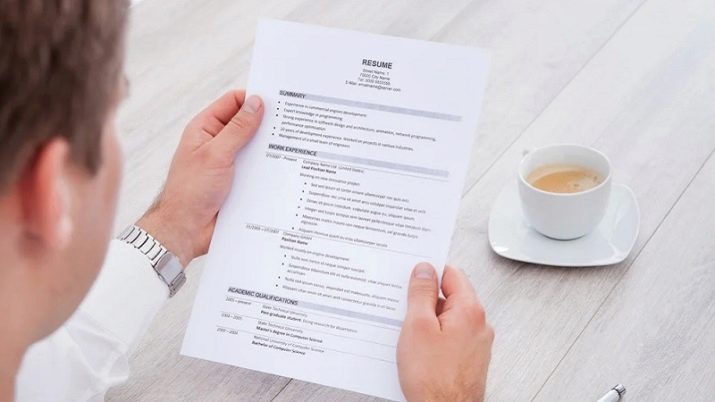
A resume is an opportunity to profitably declare yourself in the eyes of an employer. Each applicant, when applying for a particular position, undergoes a thorough internal and external screening (verification). That is why it is worth entering only honest and truthful data in the resume. If this rule is ignored, and the check will conclude a definition about your professional and personal abilities, which will go against the information contained in the document for employment, then you not only will not get the desired position, but you can also completely destroy your business and professional reputation.
A number of requirements and rules are put forward for the preparation of a resume, which must be observed.
- It is very important that this document is correctly drafted from a grammatical point of view.There should be no mistakes in spelling of words and punctuation marks, as well as no typos. Reread the document several times before submitting. Ask your loved ones about the same.
- The document is written concisely and concisely. It does not need to include unnecessarily detailed information about your personal life and biography.
- When writing a document, you should follow the rules and principles of the official business style of the language. Colloquial phrases and artistic techniques cannot be used.
- The hiring document must be clear and easy to read. That is why it is so important to respect the structure with its blocks.
- Stylish and minimalistic design will make your resume stand out from other applicants' documents. Use the same font and alignment throughout your document.

Traditionally, a resume consists of several required blocks. Among them:
- name, surname and patronymic;
- contact information (city of residence, email, phone, messengers);
- desired position and responsibilities;
- education (university, college, additional courses, trainings, master classes);
- work experience (in chronological order, previous places of work are indicated with the name of the company, clarification of the position and time of work);
- professional skills and abilities (for example, knowledge of office computer programs or a foreign language);
- hobbies and interests (reading, sports, fishing);
- personal qualities (sociability, resistance to stress, result orientation, perseverance);
- additional information (readiness for business trips or relocation, availability of a vehicle and driver's license, and so on).
However, it should be borne in mind that the list of these categories is not strictly defined and mandatory. The thing is that, depending on the specific subtype of the resume, the content of the document may change.

Types and their main features
Consider the most common types of resumes, and also figure out how how they differ from each other.
- Professional or versatile... This type of resume is considered one of the most common. You will often find examples of professional resumes on the Internet. This type is recommended for those people who have higher or secondary specialized education, as well as work experience. A professional resume is divided into clearly demarcated blocks, which are sequentially filled in and form the so-called structure of the document.
- Chronological. Such a resume is chosen by specialists who have impressive experience in one field and want to continue their professional activities within its own framework. When drawing up such a document, it is recommended to focus on the "Work experience" block. Here, in chronological order, you need to indicate all previous jobs with the name of specific companies, specifying positions and the number of years of work.
- Functional. A functional resume is suitable for those professionals who want to highlight their extraordinary professional skills and abilities, as well as talk about unusual work experience.
- Chronologically functional... This type combines the characteristics of the above two types of resume.
- Target... A targeted resume must be prepared when you are applying for a specific position. In this sense, it is important to fill out the section “The vacancy and responsibilities you are interested in” especially carefully and carefully.
- Academic. The academic resume is compiled by all ministers of science, teachers, as well as students. To compile it, it is important to have extensive educational experience (bachelor's, master's, postgraduate, courses, and so on).In addition, it is customary to write in an academic resume all available scientific achievements: victories at olympiads and conferences, scientific publications, discoveries or inventions.
- Video summary... Such a resume is relevant for those looking for a job in the media. For example, actors, TV presenters, models, journalists, and singers often choose a similar subtype of document for employment.
- Infographics... An infographic resume makes it possible to present all information about yourself in the form of diagrams, graphs and pictures. Often, such a resume is perceived many times easier than usual - a written one.
- International CV standard. An international CV must be drawn up when applying for an international company. It must necessarily indicate knowledge of foreign languages.
Writing a resume is a difficult task. At the same time, it is even more difficult to decide on a specific type of document. To choose a composing template, read the job description carefully (sometimes the employer requires a submission of one kind or another).
In addition, you should focus on the field of activity, as well as on your personal goals.


Examples of
Let's take a look at a few well-written resume examples.
- Physics and mathematics teacher.

- Sales Manager.

- Journalist.

- Account Manager.
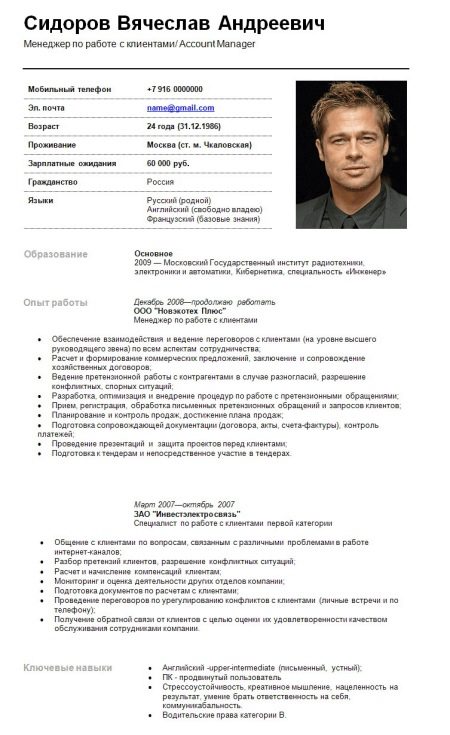
- Lawyer.
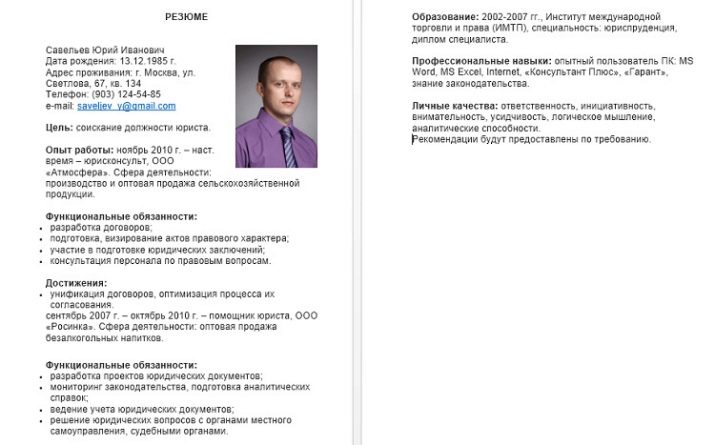
- Process engineer.

- Masseur.

- Marketing Assistant.
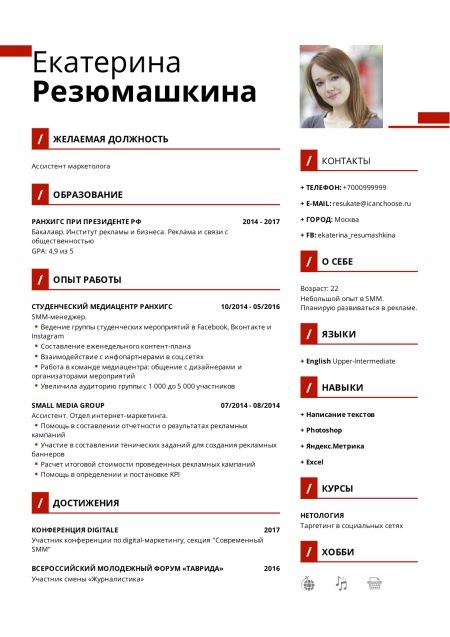
- Editor.
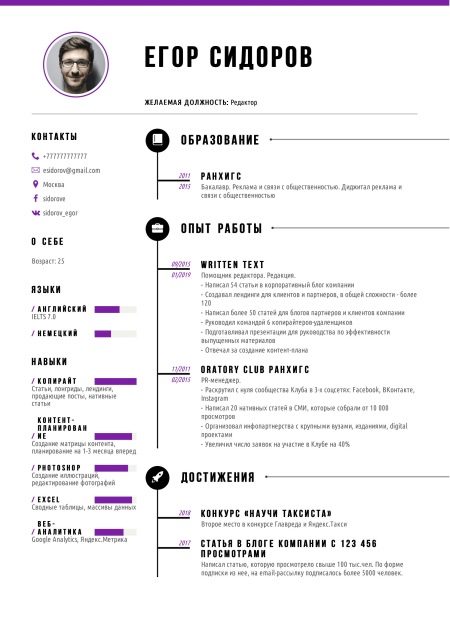
- Financial director.

In order to correctly write a resume and get the desired position, it is important to use all the advice and recommendations of experts, as well as focus on well-composed samples. Also, don't completely copy templates from the internet. Your resume should be as individualized and personalized as possible.








